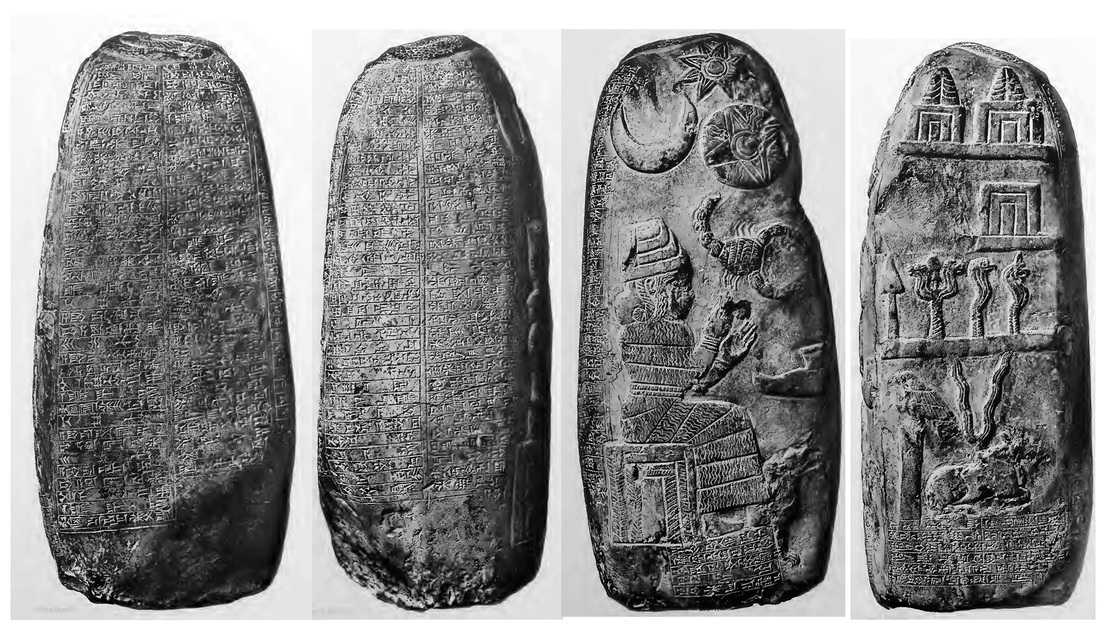Day 1160 #MyCuneiformTablets
Really, everyone should get a hype stele. Sure, Flavor Flav is more expressive, but he won't be able to continue to hype you for millenia.
Nazi-Maruttaš,
king of the universe,
son of Kurigalzu,
descendant
of Burna-Buriaš,
king without rival,
the fields opposite
the city of Babylon
to Marduk, his lord,
has given and
the city of Mār-Uqnî
of the Bīt-Muktaris-Saḫ
with 4 cities
and its 700 gur of seed
to Marduk has given and
therefrom
the mayors
the authority of the Bīt-Muktaris-Saḫ
have given back.
(A field of) 70 gur of seed,
irrigation district of the city of Risnu,
bank of the “Great canal”;
(a field of) 30 gur of seed,
irrigation district of the city of Tiriqan,
bank of the ṭaban;
total: 100 gur of seed (at the ratio of) 3 sūtu per 1 iku
(according to) 1 large cubit,
province of Bīt-Sîn-māgir.
70 gur of seed,
irrigation district of Ālu-ša-Sā’idi,
bank of the ṭaban;
30 gur of seed,
irrigation district of the city “Fort of the king”,
bank of the ṭaban;
total: 100 gur of seed (at the ratio of) 3 sūtu per 1 ikû
(according to) 1 large cubit,
province of the city “Fort of Papsukkal”.
60 (gur) of seed,
irrigation district of the city of Pilarî,
bank of the “Canal of the king”,
province of the land of the city of Bagdada;
100 gur of seed (at the ratio of) 3 sūtu per 1 ikû
(according to) 1 large cubit,
irrigation district of the city “Fort of Nergal”,
bank of the Migatu,
province of Tupliyaš;
50 gur of seed (at the ratio of) 3 sūtu per 1 ikû
(according to) 1 large cubit,
irrigation district of the city of Dūr-Šamaš-il-kalî,
bank of the Sumundar,
province of Bīt-Sîn-ašarēd;
84 gur of seed (at the ratio of) 3 sūtu per 1 iku
(according to) 1 large cubit,
irrigation district of the city of Karû,
bank of the “Canal of the king”,
province of the city of Opis.
Out of
700 gur of seed
of the city of Mār-Uqnî,
494 gur of seed
is the return,
206 gur of seed is the rest
that Nazi-Maruttaš,
king of the universe,
son of Kurigalzu,
king of Babylon,
to Kašakti-Šugab,
son of Aḫu-bani,
his servant,
has granted.
Whenever
in future
days
whoever among
the governors,
the provincial governors,
the mayors,
or the representatives
of these
lands
concerning these
fields
will raise a claim,
deduction (and) curtailment
will place,
all the great gods, whose name
on this
stela
is invoked,
whose weapon is visible
and whose (altar) bases
are recognizable,
with an evil curse
may they curse him,
may they destroy his name,
his seed
to remove
may they not become
negligent;
Marduk, the powerful,
the owner of this
field,
his life
like water
may he pour out.
The seat and the tiara
of Anu, king of the heavens;
the girgilu-bird, the courier
of Enlil, lord of the lands;
the mum and the goatfish,
the great socle of Ea;
Šulpa’e,
Išḫara,
and Aruru;
the crescent, the trough
(and) the ship of Sîn;
the disk, the radiance
of the great judge, Šamaš;
the pointed
star emblem
of Ishtar, lady of the lands;
the fierce calf of Adad,
son of Anu;
the furious fire god,
the messenger of Nusku;
Šuqamuna
and Šumaliya,
the gods who love each other;
Niraḫ, the messenger of Ištaran;
Šarur, Šargaz,
and Meslamta’e;
the reed basket,
the great link
of Esikilla.
May the 17 emblems
of the great gods
be the adversary
of him who raises a claim.
The name of the stela is:
“Nabû is the protector of the kudurru
of the fields.”
At that time
Kašakti-Šugab, son of Aḫu-bani,
a clay stela
wrote and
erected before his god.
During the reign
of Marduk-apla-iddina,
king of the universe, son of Meli-Šipak,
king of Babylon,
on this stela
a wall collapsed and it was broken.
Šuḫuli-Šugab,
son of Nibi-Šipak,
a new stela of stone,
a copy of its original,
wrote and
set up.
